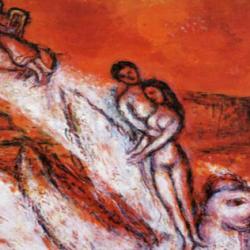Griffiths ( Song of Songs (Brazos Theological Commentary on the Bible) ) suggests that we must interpret the Song’s bodily imagery through the theological lens of Paul’s teaching concerning the body of Christ. “The complex and fluid relations of one body part to another – of hand to arm, of lips to tongue, of skin to blood – together constitute an integral organism that is what it is because it participates in the body of Christ. The parts complement and ornament one another without competing, and they cannot be properly defined or praise without reference to their relation to other parts. They are what they are only because of the relations they bear to other parts, and in this way, they image, very imperfectly, the individuation-by-relation that constitutes the Lord as the most holy Trinity.”
This, he says, gives us “theological understanding of the Song’s treatment of the parts of the body.” On this understanding, the Song’s treatment of the body cannot be understood as “a monovalent allegorical code.” Since “any member of the body may have multiple beauties and uses and may share with those other members, and if the beauties exhibited by any member can be account for only by appeal to the relations they bear to the beauties of other members, then there can be no such code.” Simply put: “To kiss any single member of the beloved’s body is to kiss all of her cause she is fully present in each, each being constituted by its relation to all.”
Griffiths goes on to make some Catholic applications of the principle, using it to justify communion in one kind. I disagree, strongly. But that doesn’t undermine the truth of Griffiths’ basic paradigm here.















